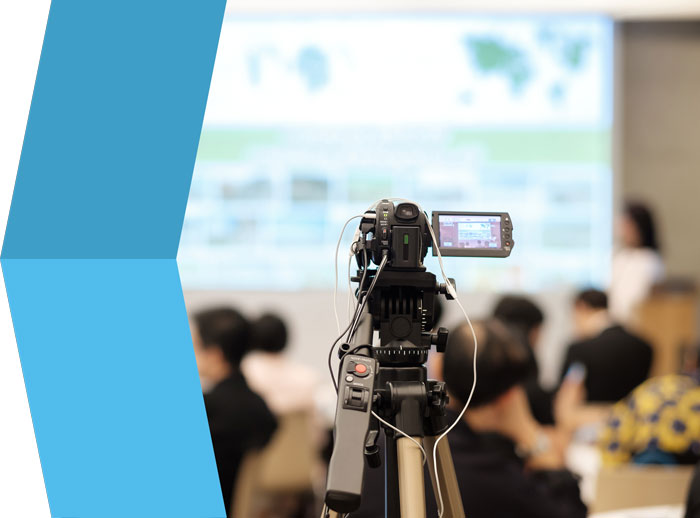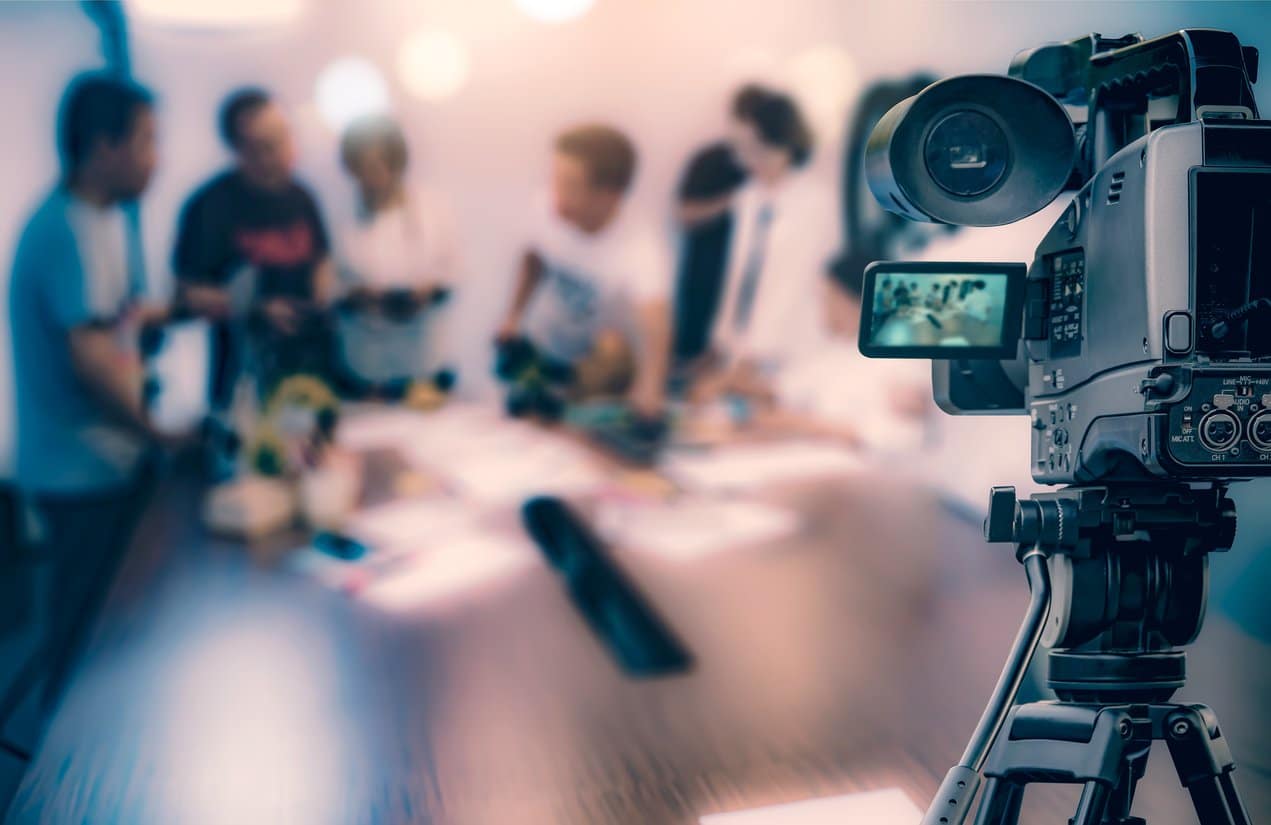Delving Into the Mechanisms of Lawful Videography: Introduction Its Procedure in Safeguarding Authentic Aesthetic Testimony for Judicial Proceedings
In the realm of judicial proceedings, the function of legal videography stands as a foundation in protecting and offering visual evidence. As technology remains to advancement, the devices behind lawful videography have become increasingly elaborate, using a critical layer of credibility to statements caught on video clip. By delving right into the functional complexities of legal videography, one can uncover the thorough procedures that protect the honesty of aesthetic evidence offered in court rooms - Legal Videography. This expedition not just loses light on the historic evolution of legal videography but additionally hints at the future fads that may further revolutionize just how visual testaments are promoted in the world of justice.
Historical Evolution of Lawful Videography
Analyzing the historic development of lawful videography exposes a significant makeover in the capturing and presentation of visual evidence within the legal landscape. In the past, lawful process heavily counted on written photos and transcripts to document events and provide proof. Nonetheless, with the arrival of video innovation, the legal sector saw a standard change in just how visual testament was recorded and offered.
The advancement of lawful videography can be mapped back to the late 20th century when innovations in video clip recording devices made it much more obtainable for use in courtrooms. This technological improvement not only improved the precision and dependability of visual proof however additionally transformed the method cases were presented to courts and judges (Legal Videography). Attorneys started to recognize the persuasive power of video recordings in sharing feelings, nuances, and non-verbal signs that created photographs or records alone could not record properly

Innovation Innovations in Video Clip Documents
What vital technical advancements have transformed video clip documentation in the legal area? The lawful field has actually seen significant advancements in video documentation modern technology that have actually enhanced the authenticity and dependability of visual evidence in judicial procedures. Among the essential developments is high-definition (HD) video recording abilities, which give crystal-clear pictures and sharp details that are crucial for properly catching testaments, face expressions, and other aesthetic cues. Additionally, the assimilation of timestamping and metadata functions in video clip documentation devices has actually enabled accurate documents of when and where the video was recorded, making certain the stability of the evidence provided in court.
In addition, innovations in video security and watermarking technologies have actually boosted the protection and tamper-proof nature of video evidence, securing it versus unapproved changes or tampering. In addition, the advent of cloud storage space remedies and remote accessibility capabilities has streamlined the storage space, retrieval, and sharing of video clip proof, facilitating seamless cooperation among lawful specialists and making sure efficient access to crucial visual testaments when needed. These technological improvements in video clip documentation have unquestionably reinvented the legal field, enhancing the accuracy, reliability, and admissibility of visual proof in judicial procedures.
Function of Legal Videographers in Courtroom Settings
The advancement of video clip paperwork modern technology in the lawful area has necessitated a crucial duty for lawful videographers in court settings, ensuring the honesty and integrity of aesthetic statements presented throughout judicial proceedings. Legal videographers play an essential role in catching and preserving exact aesthetic evidence that can be crucial in court instances. Their obligation includes establishing equipment, videotaping procedures, and producing high-quality video clips that accurately mirror the events in the courtroom.
Additionally, legal videographers usually work closely with lawful groups to ensure that the video proof aligns with the case's demands and can be successfully offered in court to support the lawful arguments being made. Overall, the role of legal videographers in courtroom settings is essential in maintaining the concepts of justice and making sure the transparency of lawful process. Legal Videography.

Ensuring Admissibility and Honesty of Video Proof
To maintain the trustworthiness of aesthetic evidence provided in lawful proceedings, making sure the admissibility and honesty of video proof is a vital duty for legal videographers. Admissibility refers to the acceptance of proof by the court, and for video evidence to be acceptable, it has to meet specific standards. Legal videographers play an important function in making certain that the videos they catch abide by the rules of evidence, such as dependability, authenticity, and relevance.
Integrity of video proof entails keeping the creativity and accuracy of the video footage from the time it is taped up visit the website until it is provided in court. This includes securely storing the video clip files, recording the chain of wardship, and protecting against any tampering or alterations. Lawful videographers have to comply with stringent procedures to guarantee the integrity of the video clip proof and protect against any kind of obstacles to its authenticity.
Future Trends in Legal Videography
Given the increasing reliance on technology in lawful procedures, legal videographers are positioned to welcome cutting-edge innovations shaping the future of visual testament capture and discussion. Among the noticeable patterns imminent is the assimilation of online fact (VR) and boosted reality (AR) modern technologies right into legal videography. These technologies have the potential to change just how aesthetic evidence exists in court rooms, allowing courts and judges to immerse themselves in the scene of the crime or occurrence.
Moreover, making use of artificial knowledge (AI) algorithms for video analysis is anticipated to improve the procedure of evaluating and assessing big amounts of video footage. AI you can look here can assist in recognizing crucial moments, abnormalities, and patterns within videos, improving the efficiency of lawful investigations.

Final Thought
Finally, lawful videography has played a crucial function in providing genuine visual evidence for judicial process. Through technical advancements and the expertise of legal videographers, the honesty and admissibility of video evidence are made sure in court room settings. As lawful videography proceeds to progress, it will be important to copyright requirements that keep the precision and dependability of aesthetic testimony for the future of legal process.
Examining the historic progression of legal videography exposes a substantial transformation in the recording and presentation of visual proof within the legal landscape.The evolution of video documents innovation in the lawful area has actually necessitated a critical function for lawful videographers in court room setups, ensuring the integrity and integrity of visual statements provided throughout judicial procedures. In addition, legal videographers typically function very closely with lawful groups to make certain that the video evidence aligns with the instance's needs and can be effectively provided in see this website court to support the legal arguments being made.To preserve the reputation of visual evidence presented in lawful process, making certain the admissibility and stability of video clip evidence is a vital obligation for legal videographers. As legal videography proceeds to progress, it will certainly be necessary to maintain requirements that maintain the accuracy and dependability of visual testimony for the future of lawful process.